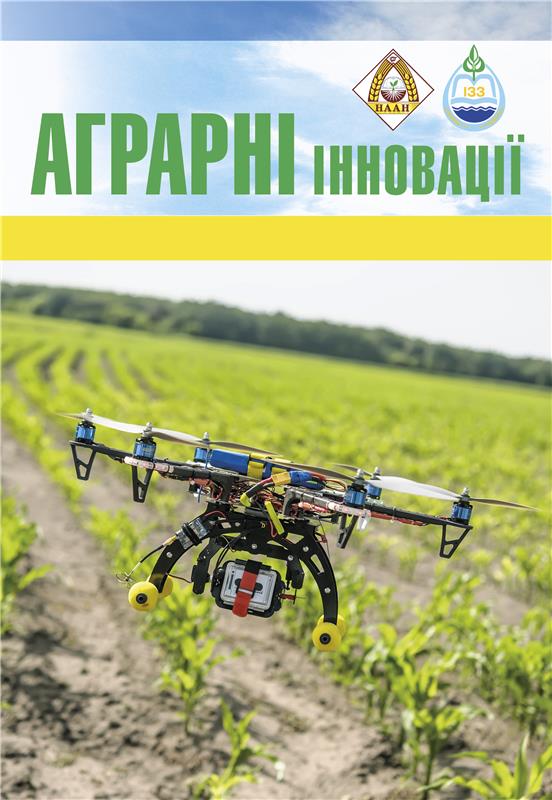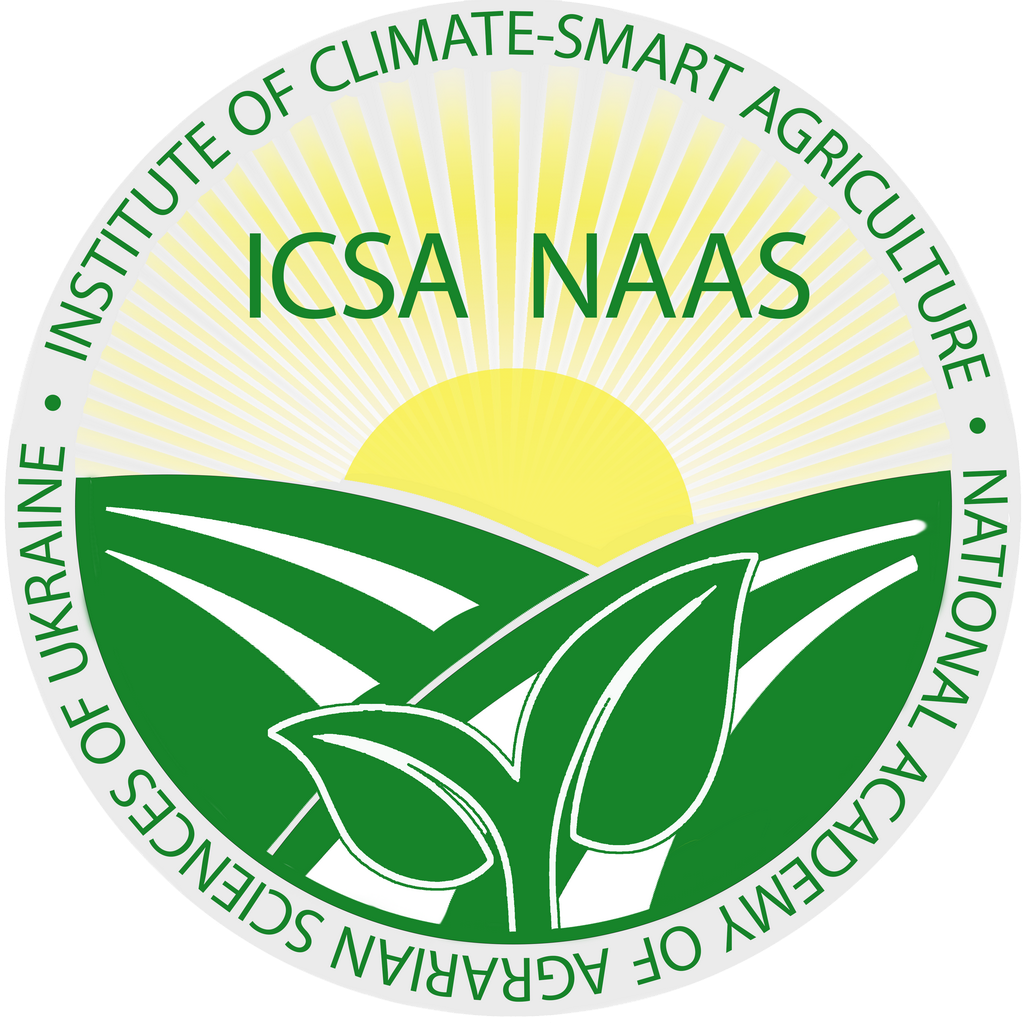PRODUCTIVITY OF WINTER WHEAT DEPENDING ON PRE-SOWING SEED TREATMENT UNDER THE CONDITIONS OF SOUTHERN UKRAINE
Abstract
The aim of the study was to determine the effect of varietal characteristics and pre-sowing seed treatment with biological products on the productivity of winter wheat under the conditions of southern Ukraine. Methods. The research was conducted during 2020–2022 at the experimental field of the Educational-Scientific-Practical Center of Mykolaiv National Agrarian University. The study involved 4 winter wheat varieties. The agricultural practices applied were standard for winter wheat cultivation in southern Ukraine. The area of the sowing plot was 50 m², the accounting plot was 26 m², with three replications. The experiment variants were arranged using a systematic method. The experimental design included the following factors: Factor A – winter wheat varieties: Ovidiy, Rosynka, Khersonska 99, Antonivka; Factor B – biological products: control (treated with water), Azotofit-R, Phytocid-R, Azotofit-R + Phytocid-R. Results. The greatest plant height was recorded in the variant with pre-sowing treatment using a combination of Azotofit-R and Phytocid-R, reaching 91.6 cm on average across the studied varieties. The highest number of productive stems was also obtained in the treatment with Azotofit-R + Phytocid-R, ranging from 490 to 508 stems/m² depending on the variety. The highest yield was observed in the variant with combined seed treatment using Azotofit-R and Phytocid-R, reaching 5.18–5.78 t/ha. This indicates that seed treatment had a positive effect on all studied varieties and significantly influenced the main indicator – grain yield of winter wheat. Conclusions. The results of the research showed a significant influence of varietal characteristics and pre-sowing treatment with biological products on grain yield formation under the conditions of southern Ukraine. The use of biological preparations, particularly in the combined variant Azotofit-R + Phytocid-R, contributed to a substantial increase in productivity, especially in the Ovidiy variety. Conversely, the control variant without biological products showed the lowest yield indicators, particularly in the Antonivka variety. This confirms the necessity of considering both varietal specificity and the choice of effective biological agents for pre-sowing seed treatment to enhance winter wheat productivity.
References
2. Korkhova, M., Smirnova, V., Panfilova, A., & Bilichenko, O. (2023). Productivity of winter wheat depending on varietal characteristics and pre-sowing treatment of seeds with biological products. Scientific Horizons, 26(5), 65-75. https://doi.org/10.48077/ scihor5.2023.65.
3. Колпакова О.С. Озима пшениця в умовах півдня: вплив прийомів сортової агротехніки на врожайність. Агроном. 2014. № 1. С. 84–85.
4. Каращук Г.В. Поліщук О.В. Урожай і якість зерна сортів пшениці озимої залежно від регуляторів росту рослин під час зрошення на Півдні України. Таврійський науковий вісник, 2019. № 105. С. 90–94.
5. Gamajunova V.V., Kuvshinova A.O. (2023). Economic efficiency of growing winter barley under the influence of biologics in the Southern Steppe zone of Ukraine. Scientific Horizons, 26(11), 39–48. https://doi. org/10.48077/scihor11.2023.39.
6. Korkhova, M., Drobitko, A., Panfilova, A., & Smirnova, I. (2022). The Role of Winter Wheat Plant Height in the Formation of Grain Yield Depending on Varietal Characteristics and Weather Conditions. Scientific Horizons, 25(11), 41–50. doi:10.48077/ SCIHOR.25(11).2022.41-50.
7. Вінюков О.О., Бондарева О.Б., Коробова О.М., Чугрій Г.А. Вплив біопрепаратів на продуктивність пшениці озимої на різних фонах живлення в умовах Донецької обл. Вісник аграрної науки. 2018. № 11. С. 41–47. https://doi.org/10.31073/ agrovisnyk201811-06.
8. Анішин Л.А., Жилкін В.О., Пономаренко С.П. Рекомендації з впровадження регуляторів росту рослин в сільськогосподарському виробництві України (2000). Київ : Високий врожай. 32 с.
9. Базалій В., Домарацький Є. Вплив біопрепаратів на врожайність і адаптивні властивості сортів пшениці м’якої озимої. Таврійський науковий вісник. 2012. № 81. С. 9–14.
10. Mashchenko Yu.V., Kulik G.A., Trikina N.M. Malahovska V.O. (2023). Уield of winter wheat in crop rotations of the steppe depends on fertilizer systems and bio-products. Agrarian innovations, (18), 77-83.
11. Грицаєнко З.М., Пономаренко С.П., Карпенко В.П., Леонтюк І.Б. Біологічно активні речовини в рослинництві. Київ: ЗАТ «Нічлава», 2008. 352 с.
12. Гамаюнова В.В., Панфілова А.В. Окупність сумісного використання добрив та біопрепаратів на пшениці озимої в Південному Степу України. Вісник Полтавської державної аграрної академії. 2019. № 1. С. 41–48. https://doi.org/10.31210/visnyk2019.01.05.
13. Державний реєстр сортів рослин, придатних до поширення в Україні на 2024 рік. Київ: Мінагрополітики та продовольства України. 2024. URL: https://minagro. gov.ua/file-storage/reyestr-sortiv-roslin
14. Дослідна справа в агрономії : навч. посібник : Статистична обробка результатів агрономічних досліджень / А.О. Рожков, В.К. Пузік, С.М. Каленська та ін.; за ред. А.О. Рожкова. Харків : Майдан, 2016. 342 с.






